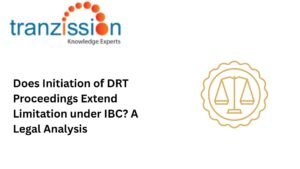
Liquidation of Non-Profit Organizations

Table of Contents
Dissolving an NPO involves legally winding down its operations and distributing its remaining assets. The reasons for Liquidation of Non-Profit Organizations are:
Common Reasons for Liquidation of Non-Profit Organizations:
Many nonprofits struggle to secure and maintain funding, leading to a decline in resources and ultimately, closure. Difficulty cultivating and retaining donors, decreased private donations, and increased demand for services can all contribute to financial challenges. Further, once their mission is successfully achieved may make its continued existence unnecessary. Failure to adhere to the relevant regulations, it can result in the loss of legal recognition and forced closure. Strategic shifts or leadership transitions can also prompt closure.
Role of the Board and State Laws:
The board of directors must initiate and approve the dissolution process. State laws govern these processes, and the board must ensure compliance with them, including obtaining necessary approvals and distributing assets appropriately.
Step-by-Step Nonprofit Dissolution Process
Board Resolution and Internal Approval:
The board must vote on and document the decision to dissolve the organization. This involves formulating which formal plan of dissolution should outline how debts and assets will be handled.
Filing Articles of Dissolution:
NPOs must file articles of dissolution with the relevant state agency. This step legally terminates the nonprofit’s existence at the state level.
Debt Settlement and Asset Liquidation:
Outstanding debts and liabilities must be identified and paid off. While the remaining assets may be sold, the proceeds must be handled according to nonprofit laws.
Asset Distribution:
The remaining assets must be transferred to another tax-exempt NPO. Distributions to private individuals or board members are strictly prohibited.
IRS Notification and Final Tax Filings:
The NPO must submit a final Form 990 to the IRS, marking it as the organization’s final return. This also includes submitting Schedule N to disclose how the nonprofit’s assets were distributed.
Cancel Licenses and Notify Stakeholders:
It is crucial for NPOs to notify donors, vendors, staff, and volunteers about the dissolution. They must also cancel business licenses, state registrations, and any tax-exempt certifications.
Common Mistakes to Avoid During Dissolution
Distributing Assets to Board Members:
Transferring assets to directors or staff is illegal and can result in serious penalties. To avoid this, assets must only be transferred to qualified tax-exempt organizations.
Ignoring State-Specific Legal Requirements:
Each state has unique filing obligations for nonprofit dissolution. Failure to follow them can delay or invalidate the dissolution process.
Failing to File Final IRS Forms:
Not submitting the final IRS Form 990 can lead to fines and legal trouble. Always complete all tax obligations to formally close the nonprofit.
Poor Record-Keeping During Closure:
Lack of documentation can lead to legal or financial challenges later. Keep detailed records of all board decisions, filings, and financial transactions.
Case Study: A Small 501(c)(3) That Closed Successfully
This case study focuses on a fictional organization named “Hope for Tomorrow”, operating in Delhi. It has the main aim of providing educational resources and skills training to underprivileged children and young adults. They operated a small library offered after school programs, and provided vocational training in basic computer skills. After several years of successful operation, the board of this organization could not sustain the level of impact they desired and faced challenges in attracting and retaining volunteers. Hence, they could secure funding for their operations. They decided the best path forwards was to transition their operations and assets to a larger, more established organization with greater resources and wider reach. Their Liquidation of Non-Profit Organizations process was smooth and efficient due to keeping stakeholders informed, adhering to the IBC, and maintaining transparency throughout the process.
Checklist for Liquidating a Nonprofit Organization
This tool helps nonprofits stay organized and compliant throughout the process:
- The board should approve the decision to liquidate, proposed distribution of assets, and appointment of liquidation.
- Inform all stakeholders, including employees, volunteers and beneficiaries, about the Liquidation of Non-Profit Organizations process.
- Seek legal counsel to ensure compliance with all relevant law and regulations.
- Notify the relevant state or local government agency or local tax authorities responsible for non-profit oversight.
- Obtain valuations for all assets, including real estate or equipment, to determine fair market value.
- Maintain detailed records of all asset transfers, including dates, amount, and recipient information.
Conclusion
While the IBC can be applied to NPOs, the process and considerations may differ due to the nature and goals of these entities. If a section 8 company faces financial distress, the Liquidation of Non-Profit Organizations process can be initiated. But the success of the process and the potential for revival may depend on various factors, including the viability of a resolution plan and the ability of creditors to be satisfied through asset liquidation. It is necessary to encourage nonprofit leaders to follow all legal steps and protect the integrity of their mission.
Read more :





